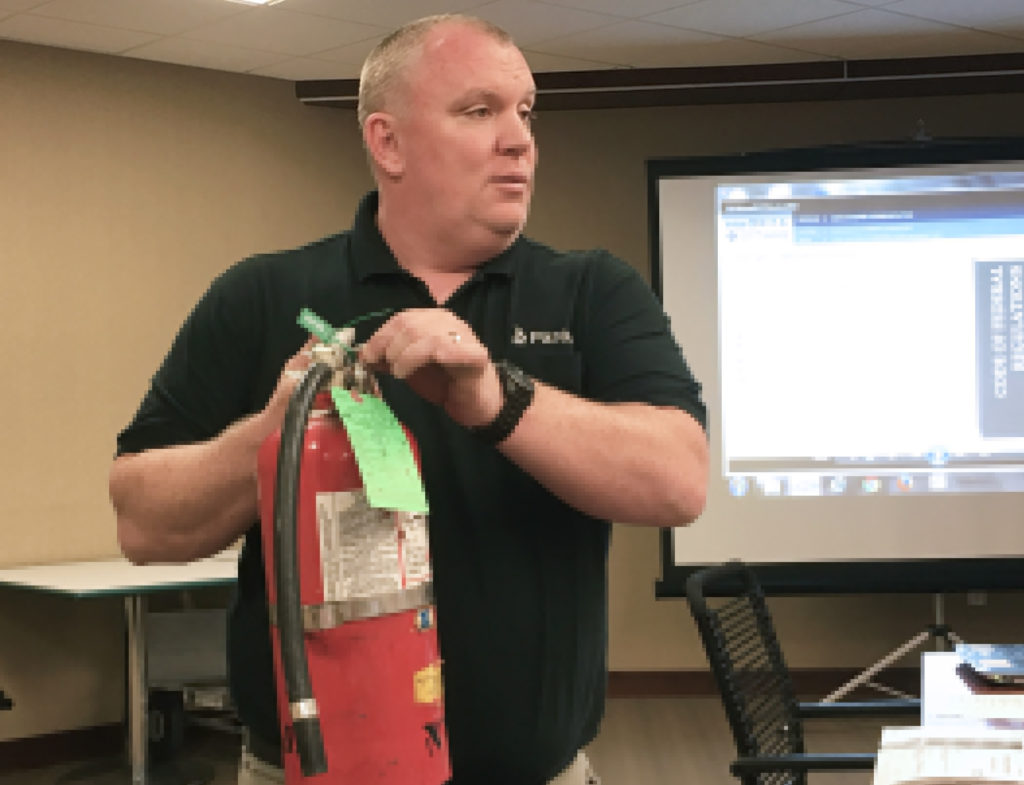Training Takes a Virtual Turn
Virtual training eliminates travel and other costs such as hotel rooms and meals, and so it is appealing to some companies, but it has limitations, too.
Dave Latourell, director of safety and transportation for Paraco Gas Corp., Rye Brook, N.Y., who conducts training sessions–both the online kind and the in-person variety–said, “I do prefer face-to-face training for multiple reasons. Because of the quality of instruction, [and] the opportunity to bring different people from around the company together which also creates some interesting opportunities.”

Centralized, in-person training, Latourell adds, “brings to light some
challenges in the company, as well as maximizing the ability to train while minimizing the time commitment to it.”
But with the pressure exerted by the coronavirus pandemic, especially the imperative to maintain social distancing, improving the power of online training is becoming a priority in many quarters.
Some trainers, Latourell included, are experimenting with a qualified co-trainer in virtual sessions.
Some employers might view a training tandem as an added cost, Latourell concedes. It might be worth it, Latourell and another trainer say, having participated in sessions featuring two instructors.
They say a co-trainer enables an online session to achieve an impact that is equivalent to that of in-person sessions.
With the advent of online meeting platforms such as Zoom, Latourell says, “Everybody’s doing some form of virtual meetings and or training. Everybody thinks it’s the wave of the future and the success story to eliminate budget problems.”
It might not be quite as clear-cut as that.
“There’s a lot of preparation that goes into virtual training for it to be successful,” Latourell says. “You don’t want to take virtual training and recreate classroom training on a computer.” He asks, “How do you make virtual training better than classroom training, if you can?”
Latourell says, “I’ve attended a variety of virtual trainings that people have put on—successfully and unsuccessfully—and tried to identify the challenge areas, look at the successes. I think the best success of the classroom training is the interaction with the students. How do you create that in a virtual method? That’s the challenge.”
Paraco, like many other companies and organizations, is using Zoom, which Latourell notes “seems to be the preferred method, right now.”
A shared screen option on Zoom enables use of video and PowerPoint, but Latourell says, “the challenge you run into is, ‘How do you interact with the group?’”
Another critical consideration is keeping track of connections–literally. “How do you know, as an instructor, if other people are experiencing technology difficulties?” Latourell points out.
“You almost need two qualified instructors,” Latourell says. “Which is very different, right? How many times have you had two instructors in a training class?”
Latourell is exploring virtual meetings and training sessions that feature a second person, attending virtually, to monitor the event in real time, as well as track the technical quality of the transmission.
Using a PowerPoint presentation or other visual elements poses a challenge for an instructor during an online session. “Your focus is directed on that,” Latourell says. Compared to a classroom setting in real life, “It’s not as easy to focus on the students because they only appear as little pictures on the computer screen,” he says. For effectiveness online, more than one screen might be needed. A co-trainer can be enlisted as an observer, watching and listening to the audience members, assessing how the material is being received, how it’s registering, keeping alert for signs that there are questions.
A secondary instructor needs a way to communicate with the primary instructor.
“If you are reading from a lesson plan your focus is on that,” Latourell says. “If you’re trying to scan chat and digest it—most of us can’t multitask that well.”
Chat is one tool for interacting with or responding to attendees. Chat could be conducted using a secondary device like a cell phone for text messaging, Latourell says. “That second instructor has to have the capability to dive into the content and into the instruction to try to grab the attention of the instructor,” he says.
Scott Vadino, an HVAC technical service representative for wholesale distributor F.W. Webb Co., Bedford, Massachusetts, says of virtual sessions with dual presenters, “We’ve done some. I’ve been on some. The second guy actually watches questions [on chat], and he can answer questions as the second trainer or he can bring it to your attention.”
The size of a group makes a difference to the potential effectiveness of virtual and hypnosis training, Latourell says. “The smaller the group the easier this is,” he says.
“I recognize what isn’t working in trainings that I’ve attended,” Latourell says. “I’ve seen what has worked. It continues to evolve.”
When an instructor is engaged in teaching online, they might not have the ability to visually gauge what’s going on among the attendees. What can be done to alert the instructor that an attendee wants to ask a question, for example?
“Chat doesn’t really draw the attention of the presenter unless there’s another medium that attracts the presenter’s attention, [such as] a sound”–some sort of audio signal, Latourell observes.
“If you think about cell phone technology we’ve all kind of migrated to the ‘vibrate’ feature,” to get our attention when we’re focused on something else, Latourell points out.
This can be like in-person, in-class interaction, according to Latourell, allowing the secondary trainer to engage verbally and audibly with the presenter.
An upcoming challenge is emergency response training to be offered by the New York Propane Gas Association.
“We are looking at some of these options and trying to entice people to attend virtually,” Latourell says.
Paraco held its annual area managers safety symposium a few weeks ago. Approximately 50 attendees from the company attended the four-hour symposium.
For the most heavily attended portions, Latourell says, “We didn’t mandate that people turn on their cameras” because some people don’t use Zoom on a regular basis, and are not accustomed to using it. About half the attendees appeared onscreen, he estimates.
Latourell served as a class monitor of sorts as three other presenters ran their individual sessions. “I took on the role of the interested observer and tried to manage the interest of our management team,” he says. “I tried to
pay attention to their thirty-eight to forty-eight screens, depending on the session.”
Experimenting in the role of second banana, so to speak, for the first three speakers, was instructive, Latourell found. “I was the host. I shared the screen with the other three presenters to make sure their technology was coming through, and I acted as their observer.” In addition to dealing with any technological hiccups, he kept busy moderating the chat.
When Latourell gave his own presentation, he performed solo, and he felt the difference. “Being a presenter, I lost that capability of being able to scan the group. You find yourself teaching to the computer screen because that’s where the camera is. I found it very difficult to try to teach, try to scan some chat and also try to engage the group.”
Though he has learned from discussions with other instructors that “more monitors and larger monitors give you a similar experience to being live in front of people, it’s definitely still a work in progress,” Latourell says.
One thing he says he knows for sure:
“You can’t just do on Zoom the same thing you would do in the classroom. You have to find more videos, more visuals to try to break it up.” He adds, “We go through the material faster in Zoom than in person–unless you can really engage the group” as is done in the best moments in-person, in a classroom.
“What impacts the classroom is the breaking off to answer questions,” Latourell notes. That generally leads to people recounting their experiences and comparing them. “When you lose that interaction or can’t engage them that way you go through the material faster.”
The goal is to simulate the ease of exchange and spontaneity that are hallmarks of in-person instruction.–Stephen Bennett
Stephen Bennett is the editor of Fuel Oil News.

